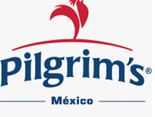Jonas Edholm, lead portfolio manager of the fund, outlines the investment team's contrarian and price-driven process to find these significantly undervalued hidden gems in the small and mid-cap global equity market.
Favourably positioned as contrarian and price-driven investors
SKAGEN Focus is a contrarian, unconstrained and price-driven global equity fund with access to a large opportunity set across different geographies and sectors in global equity markets. Substantial undervaluation is required for us to invest in a company in the first place, and more specifically we demand at least a 50 percent upside in the equity price on mid-term or normalised earnings.
As contrarian investors we have developed skills to identify companies that are ignored, misunderstood, below-the-radar and forgotten, which – in combination with a highly discounted price tag – is the starting point in our hunt for new portfolio positions. These types of investment situations are more common in the small and mid-cap equity space and, as a result, around 80% of our portfolio is invested in this segment at quarter end.
An investor who deliberately decides to go against the prevailing wisdom of other investors in order to gain financial returns.
Seeking many ways to win
For each investment case in the portfolio, we like to identify multiple ways to win, more specifically in the form of different drivers for potential re-valuation from our mid-term investment perspective. A potential buy-out offer is never a tangible fundamental catalyst for an investment case, but rather a natural event that occurs when a company's stock becomes overly cheap in relation to near-term earnings power, often in combination with solid tangible asset support. When the price and valuation of a stock drop too far, strategic buyer interest awakens. A more modest market cap increases the probability of a buy-out offer being made and the fund's innate bias towards small and mid-cap stocks[1] is also helpful in this respect.
Solid industrial/strategic interest in our assets in 2021

April/May 2021: West African junior gold miner Roxgold (5% position)
Roxgold received a buy-out offer from Fortuna Silver at a 40%+ premium in a cash/stock deal. We still hold a 2.8% position in Fortuna Silver having sold half the position following the bid. Roxgold entered the portfolio at USD 0.8 per share and the stock was worth around USD 2.80 per share at the time of the deal.

June/July 2021: Mobility service company EuropCar (1.8% position)
A below-the-radar buy-out offer was made by a Volkswagen-led consortium following the restructuring of EuropCar's balance sheet. The company was significantly undervalued on mid-term earnings power. The offer was made at 0.51 per share (cash). Our position was initiated at 0.28 per share and we exited the company following the offer.
August 2021: UK spirits producer Stocks Spirits (2.4% position)
The stock had been trading at a more than 50% discount to fair value and peers despite its strong balance sheet and healthy cash flow generation. Stock Spirits received a buy-out offer from the private equity fund CVC at a 41% premium in a cash deal, at 377p per share. We initiated our position at around 220p and closed the position following the offer.

August 2021: US Chicken producer Pilgrim's Pride (3.0% position)
Pilgrim's Pride received a buy-out offer from its main owner JBS (owned 80% of PPC prior to the deal). PPC had been trading at a vast discount to Sanderson Farm and to our estimate of fair value based on normalised earnings power. The position was initiated during the depths of the pandemic in Feb/March 2020 at USD 15-16 and the offer came in at USD 26.50. We have retained half the position as there is some likelihood of a raised bid. The stock currently trades at USD 29.29. The cash premium at the time of the offer was around 22%.

September 2021: UK bus operator Stagecoach (2.4% position)
Stagecoach received a take-out offer from peer National Express at a 20%+ premium on the day of announcement. We initiated our position in Stagecoach before the summer when the stock was weak. Following the cash swap deal, the company is now in the profit zone, but still some way off our price target of 130p. We have held onto the bulk of the position.
Valuation model aligned with strategic buyers
We apply a private equity-based valuation approach, which is probably fairly aligned with most industrial or strategic buyers of an asset. Strategic buyers would also add potential synergies to the equation, which come on top of the conservative valuation approach we apply. When valuing an investment case, we think of ourselves as owners of the overall company.
Our valuation model uses several inputs and aligns us further with industrial or strategic buyers. Initially we take a contrarian approach to identify assets that are ignored, forgotten or have been unjustifiably overlooked. The reasons for the undervaluation are critical to understanding and framing the investment case as financial markets are quite efficient over time. Simply put, we seek to find investment cases that are cheap for the right reasons.
In our valuation work we start by quantifying the Enterprise Value of a company, which is essentially the market cap of the company with the addition of outstanding net debt. This includes items such as preference shares, minorities, options to management and other stakeholders and pension deficits. This exercise essentially delivers an answer to the question: How much investment would be required to buy this company off market and make it debt-free?
We then need to know what tangible assets the company has in today's market value terms. This part of the valuation process would answer the question: How much investment would be required to replicate and rebuild the current asset base today? We can define this balance sheet item as the Replacement Value of the company's assets. This exercise involves applying a current market value to equity holdings, property and machinery and eliminating any potential inaccuracies from intangible assets. We would give credit to research/development and marketing costs which would replace potential intangible values in the balance sheet.
We then compare these two highly relevant metrics and receive the answer to the important question: Is it more profitable to buy or build to receive ownership of a specific asset? If the company's Enterprise Value is way below its Replacement Value, it would make sense to buy the asset off market even at a market premium. In the reverse situation, it would probably make more sense to build up the asset and list it on the global equity markets.
A conservative approach
The missing piece of the valuation puzzle is then the estimated earnings power on the asset base. We like to be conservative and not focus on potentially overly optimistic earnings assumptions. We therefore use either normalised or mid-term earnings power (maximum 2-3 years) to underpin our fair value calculation. We subtract an estimate of company maintenance capital expenditure (as opposed to growth investments) and a normalised tax rate as we are interested in analysing the company from a steady-state operating perspective.
The return on the asset base is then compared to our required equity return hurdle rate which we pinpoint at 6% for industrial assets and 7.5% for financial companies. We have not changed the hurdle rate in the last few years despite the currently extremely low risk-free interest rates, highlighting the conservative nature of our valuation methodology. The higher return requirement of financial companies is warranted since these companies use leverage in their business models and are inherently riskier investment cases. We use the same equity hurdle rate regardless of geography which allows us to efficiently compare assets across the globe and between sectors.
We can then pinpoint a price target for a specific company based on the above inputs. It is important to note that we require at least a 50% undervaluation on top of the annual equity hurdle rate to be interested in an investment in the first place. We require tangible catalysts for substantial asset discounts to be unwound over the medium term, i.e., 2-3 years.
Trend set to continue
Admittedly, this year's track record of five buy-out offers for companies in the portfolio is quite unusual – and this even before year end. In our investment process, as contrarian and price-driven investors, and with our private equity-based investment valuation model, at times we manage to invest ahead of industrial and strategic buyers. We think the solid fundamentals are in place for this encouraging trend to continue, albeit probably at a slower pace going forward.
[1] Small cap companies are defined as having a market cap of USD 0-2 billion and mid-cap companies of USD 2-10 billion





